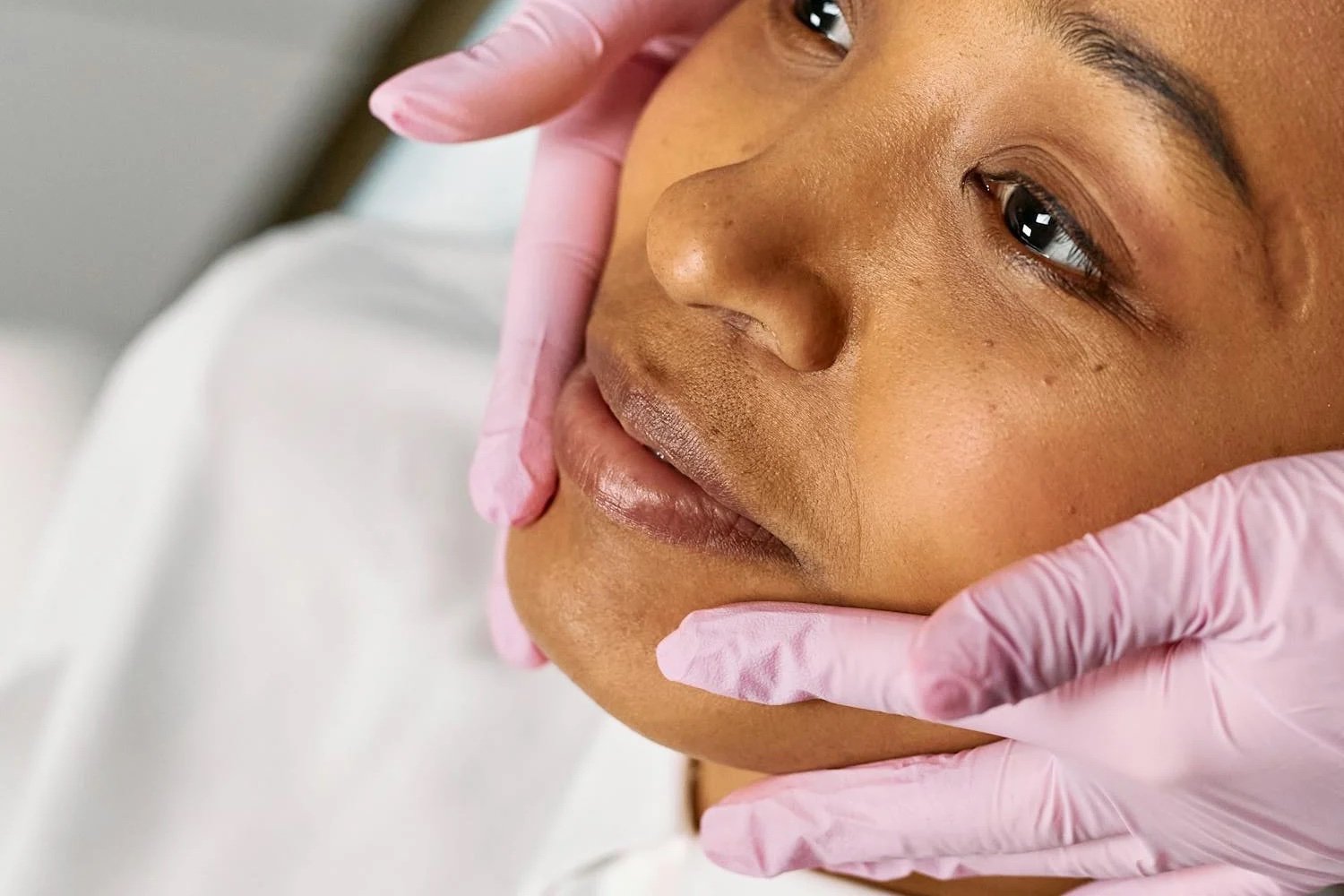
Stretch Marks
Understanding Stretch Marks
Stretch marks, also known as striae, occur when the skin stretches rapidly, causing the collagen and elastin fibres in the dermis to break. This typically happens during periods of rapid growth or significant changes in body size, such as pregnancy, puberty, or weight gain. Initially, these marks may appear as vivid red, purple, or dark brown streaks due to the increased blood flow and inflammation in the affected areas. Over time, they often fade to a lighter colour, blending more with the surrounding skin but leaving behind a distinct, textured pattern.
Some of the most common causes of stretch mark forming are…
Rapid Weight Gain or Loss: Quick changes in body size can stretch the skin, leading to stretch marks.
Pregnancy: The skin stretches significantly to accommodate the growing fetus, especially in the abdomen, breasts, and thighs.
Puberty: Growth spurts during adolescence can stretch the skin, particularly in areas like the hips, thighs, and back.
Hormonal Changes: Conditions like Cushing's syndrome or prolonged use of corticosteroid medications can affect skin elasticity and lead to stretch marks.
Genetics: A family history of stretch marks may increase the likelihood of developing them, as genetic factors can influence skin elasticity and susceptibility.
Where Do Stretch Marks Typically Appear?
Stretch marks often make their appearance on parts of the body that experience rapid or significant stretching. You’ll commonly find them on the abdomen, which expands notably during pregnancy or quick weight gain, and on the thighs and hips, where hormonal shifts and weight changes can create noticeable striae. The breasts are another frequent site, especially during puberty or pregnancy when they undergo substantial growth. Stretch marks can also pop up on the lower back and upper arms. These areas are particularly prone to stretch marks because they endure frequent changes in size or volume, which puts extra strain on the skin’s collagen and elastin fibres, resulting in those distinctive lines.
Treatment Options at Image
Morpheus8
Morpheus8 combines microneedling with bipolar radiofrequency energy to target deeper skin layers. This treatment promotes the rebuilding of collagen and remodelling of subdermal tissue, making it effective for treating stretch marks. By enhancing the skin’s structure and elasticity, Morpheus8 offers a non-surgical approach to improve the appearance of stretch marks and scars.
Microneedling
Microneedling involves using tiny needles to create controlled micro-injuries in the skin. This process triggers the body’s natural healing response, stimulating the production of collagen and elastin. As new, healthy skin regenerates, stretch marks gradually fade. The results improve over time as collagen and elastin levels increase, leading to smoother skin and reduced appearance of stretch marks.
BioRePeelCl3® Chemical Peel
The BioRePeelCl3® Gold Solution is designed to enhance collagen and elastin production, making it particularly effective for treating thicker skin areas prone to stretch marks. This advanced peel stimulates fibroblast activity, leading to tighter and firmer skin. It addresses rough texture, skin laxity, and stretch marks with minimal downtime, leaving the skin rejuvenated and smoother.
Jet Plasma
Jet Plasma uses cold plasma technology to penetrate the dermal layer, stimulating collagen and fibroblast activity. This non-invasive treatment tightens and remodels the skin from within, addressing stretch marks and improving skin texture. By boosting collagen production, Jet Plasma effectively reduces the visibility of stretch marks and other skin imperfections. Additionally, it enhances overall skin health by promoting a more even complexion and encouraging the skin's natural healing processes.
IPL (Intense Pulse Light)
IPL targets the reddish discoloration of new stretch marks by using specific light wavelengths to reduce redness and inflammation. This treatment stimulates dermal fibroblasts to improve skin texture and promote collagen production. While IPL is effective for pink or red stretch marks, it is less suitable for older, white stretch marks. A series of treatments can help smooth out stretch marks and restore the skin’s natural appearance.
Exosomes and Purasomes
The application of purasomes, paired with treatments such as microneedling, morpheus and jet plasma, can treat stretch marks by delivering growth factors and regenerative agents that boost collagen and elastin production, improving skin strength and elasticity. Purasomes NC150+ Nutri Complex, in particular, enhances works by reprogramming cells to youthful levels, increasing skin thickness, brightness, hydration, and elasticity. With its hyaluronic acid content, the complex fills gaps between collagen fibres, reduces water loss, and stimulates new blood vessel formation for better oxygenation. Together, these treatments repair the skin’s structure, reduce the appearance of stretch marks, and help prevent new ones.

